Discover 11 hidden attractions, cool sights, and unusual things to do in Flagstaff (United States). Don't miss out on these must-see attractions: Lowell Observatory, Humphreys Peak, and Wupatki National Monument. Also, be sure to include Riordan Mansion State Historic Park in your itinerary.
Below, you can find the list of the most amazing places you should visit in Flagstaff (Arizona).
Table of Contents
Lowell Observatory

Astronomical observatory. Lowell Observatory is an astronomical observatory in Flagstaff, Arizona, United States. Lowell Observatory was established in 1894, placing it among the oldest observatories in the United States, and was designated a National Historic Landmark in 1965. In 2011, the Observatory was named one of "The World's 100 Most Important Places" by Time Magazine. It was at the Lowell Observatory that the dwarf planet Pluto was discovered in 1930 by Clyde Tombaugh.
The observatory was founded by astronomer Percival Lowell of Boston's Lowell family and is overseen by a sole trustee, a position historically handed down through the family. The first trustee was Lowell's third cousin Guy Lowell (1916–1927). Percival's nephew Roger Putnam served from 1927 to 1967, followed by Roger's son Michael (1967–1987), Michael's brother William Lowell Putnam III (1987–2013), and current trustee W. Lowell Putnam.
Multiple astronauts attended the Lowell Observatory in 1963 while the moon was being mapped for the Apollo Program.
The observatory operates several telescopes at three locations in the Flagstaff area. The main facility, located on Mars Hill just west of downtown Flagstaff, houses the original 61-centimeter (24-inch) Clark Refracting Telescope, which is now used for public education, with 85,000 annual visitors. The telescope, built in 1896 for $20,000, was assembled in Boston by Alvan Clark & Sons and then shipped by train to Flagstaff. Also located on the Mars Hill campus is the 33-centimeter (13-inch) Pluto Discovery Telescope, used by Clyde Tombaugh in 1930 to discover the dwarf planet Pluto.
In 2014, the 8,000 square feet (740 m2) Putnam Center was opened. This observatory included many rooms with tools that were useful to observers including a library for research, a room for processing photographic glass plates, multiple antique instruments used by previous astronomers, and many artifacts. The observatory does contain areas that are closed to the public view, although there are multiple places that tourists are welcome to visit.
Lowell Observatory currently operates four research telescopes at its Anderson Mesa dark-sky site, located 20 km (12 mi) southeast of Flagstaff, including the 180-centimeter (72-inch) Perkins Telescope (in partnership with Boston University) and the 110-centimeter (42-inch) John S. Hall Telescope. Lowell is a partner with the United States Naval Observatory and Naval Research Laboratory in the Navy Precision Optical Interferometer (NPOI) also located at that site. The Observatory also operates smaller research telescopes at its historic site on Mars Hill and in Australia and Chile.
Past Anderson Mesa, on the peak of Happy Jack, Lowell Observatory built the 4.28-meter (169-inch) Lowell Discovery Telescope in partnership with Discovery Communications, Inc.[1]
Address: 1400 W Mars Hill Rd, 86001-4499 Flagstaff
Humphreys Peak
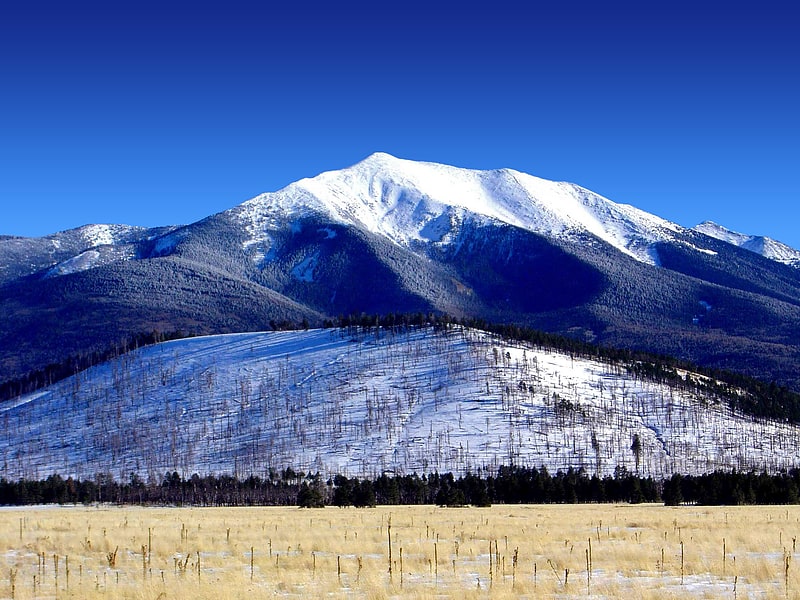
Peak in Arizona. Humphreys Peak is the highest natural point and the second most prominent peak after Mount Graham in the U.S. state of Arizona, with an elevation of 12,637 feet and is located within the Kachina Peaks Wilderness in the Coconino National Forest, about 11 miles north of Flagstaff, Arizona. Humphreys Peak is the highest of a group of dormant volcanic peaks known as the San Francisco Peaks.
The summit can be most easily reached by hiking the 4.8 miles (7.7 km) long Humphreys Summit Trail that begins at the Arizona Snowbowl ski resort in the Coconino National Forest.
Humphreys Peak was named in about 1870 for Arizona General Andrew A. Humphreys, a U.S. Army officer who was a Union general during the American Civil War, and who later became Chief of Engineers of the United States Army Corps of Engineers. However, a General Land Office map from 1903 showed the name San Francisco Peak applied to this feature (apparently borrowed from San Francisco Mountain on which the peak stands). Thus the United States Board on Geographic Names approved the variant name in 1911. In 1933, the application of the names was rectified.[2]
Wupatki National Monument
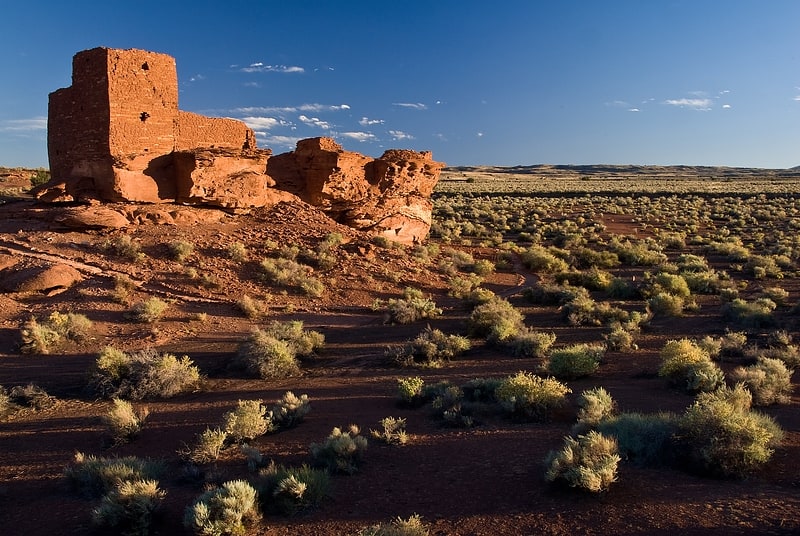
National monument in Coconino County, Arizona. The Wupatki National Monument is a United States National Monument located in north-central Arizona, near Flagstaff. Rich in Native American archaeological sites, the monument is administered by the National Park Service in close conjunction with the nearby Sunset Crater Volcano National Monument. Wupatki was listed on the National Register of Historic Places on October 15, 1966. The listing included three contributing buildings and 29 contributing structures on 35,422 acres.[3]
Riordan Mansion State Historic Park
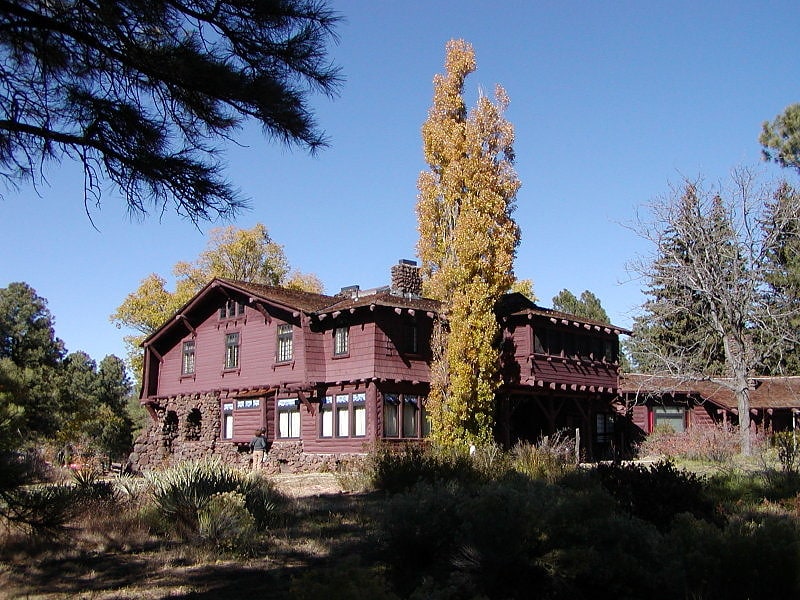
State park in Flagstaff, Arizona. Riordan Mansion State Historic Park is a historic site in the Kinlichi Knoll neighborhood of Flagstaff, Arizona, bordering Northern Arizona University.[4]
Address: 409 W Riordan Rd, 86001-6440 Flagstaff
Picture Canyon Natural and Cultural Preserve
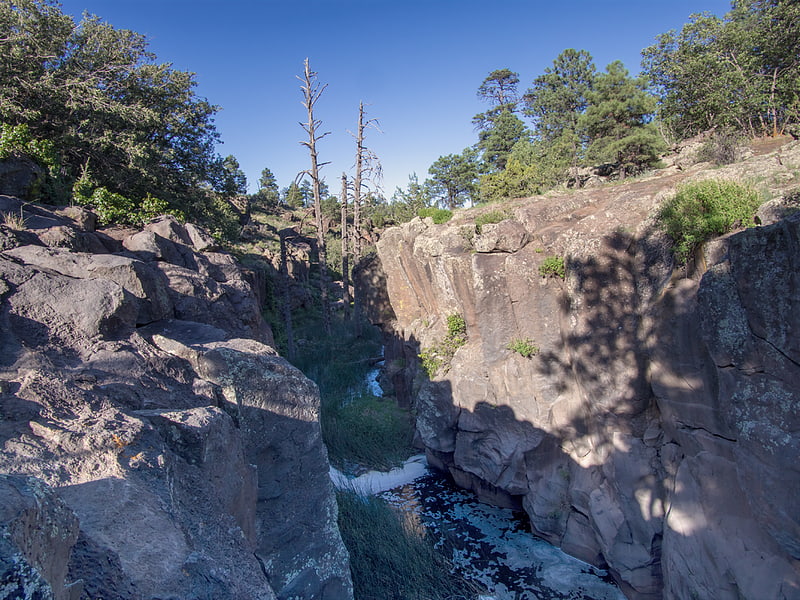
National recreation area. The Picture Canyon Natural and Cultural Preserve is an archaeological site and a nature preserve open to the public year-round, located in northeast Flagstaff, Arizona. The preserve is used for educating the community about ecology, geology and archaeology along with general outdoor recreation.
History
Picture Canyon was listed on the National Registry of Historic Places on January 10, 2008. The 478-acre preserve was purchased October 30, 2012 at a public auction on the steps of Coconino County Courthouse from the State Land Department by the City of Flagstaff for $4.8 million after several community groups rehabilitated the area and rallied decades for its protection. An agreement was made with the Wildcat Hill Wastewater Treatment Plant, located immediately south of the preserve, to provide a constant water source for the riparian habitat and wildlife. Reclaimed water is discharged into a pond which feeds the Rio de Flag through a rugged geological canyon composed of basalt rock. Thousands of years ago, between 700-1300 AD, this area was home to the natives known as the Northern Sinagua (people without water). Picture Canyon is named for the large density of petroglyphs created by the Sinagua located along the river. Hundreds of panels were created depicting archers, geometric shapes, and local animals like birds and turtles.
Trails and Natural Features
There are three trails within the preserve:
- Tom Moody Trail is a 2.8-mile outer loop within the preserve. An outdoor classroom with educational panels is located near the start of the trail. The southeast section of the trail initially runs parallel with the Rio De Flag and along the canyon walls where a visitor can view the waterfall within the preserve. Continuing northeast, after crossing the Rio De Flag Bridge, will bring a visitor to a waterbird petroglyph site.
- Don Weaver Trail is a 0.7-mile section connecting with the Tom Moody Trail to create a smaller loop and brings a visitor to the opposite side of the canyon walls for another view of the waterfall.
- Arizona Trail is a 1.5-mile section of the larger 800+ mile trail that spans from Mexico to Utah, and bisects the Tom Moody Trail.
Orpheum Theater
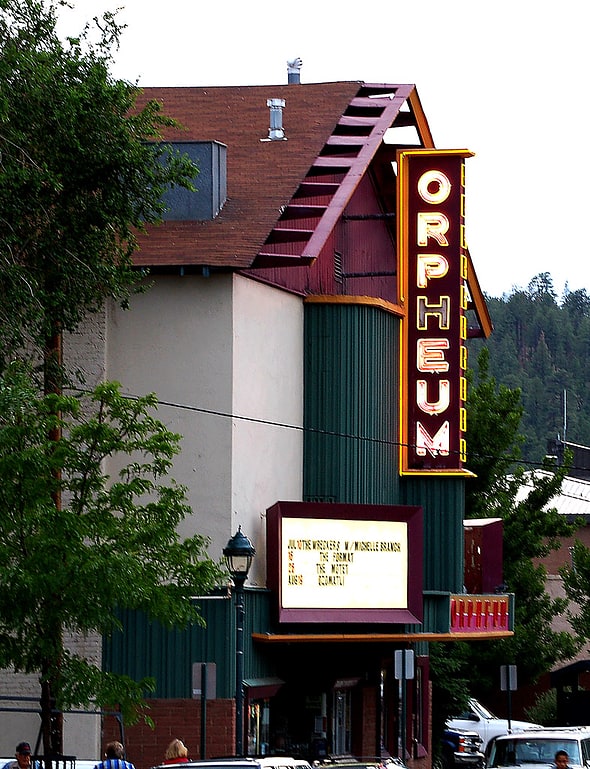
Movie house in Flagstaff, Arizona. The Orpheum Theater is an old movie house in Flagstaff, Arizona, originally named the Majestic Opera House. The building was constructed in 1911. It was rebuilt and expanded in 1917, and renamed the Orpheum. The theater closed in 1999. Three years later, in 2002, it reopened as a concert venue. It is owned by Chris Scully and Charles Smith.[6]
Address: Flagstaff, 15 West Aspen Avenue
Museum of Northern Arizona
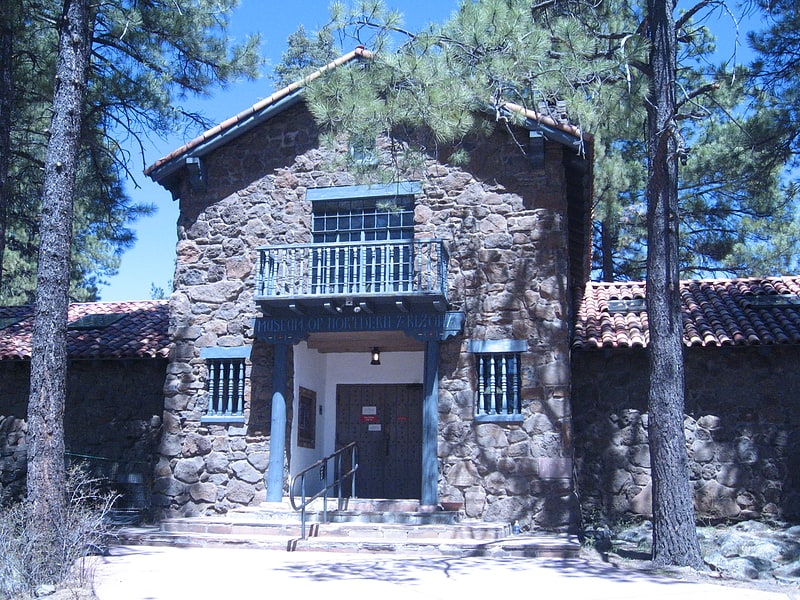
Museum in Flagstaff, Arizona. The Museum of Northern Arizona is a museum in Flagstaff, Arizona, United States, that was established as a repository for Indigenous material and natural history specimens from the Colorado Plateau.
The museum was founded in 1928 by zoologist Dr. Harold S. Colton and artist Mary-Russell Ferrell Colton from Philadelphia, Pennsylvania, and is dedicated to preserving the history and cultures of northern Arizona and the Colorado Plateau.
The museum is a member of the North American Reciprocal Museums program.
Hours of Operation:Monday–Saturday: 10:00 am–5:00 pmSunday: 12:00–5:00 pm[7]Address: 3101 N Fort Valley Rd, 86001-8348 Flagstaff
The Arboretum at Flagstaff
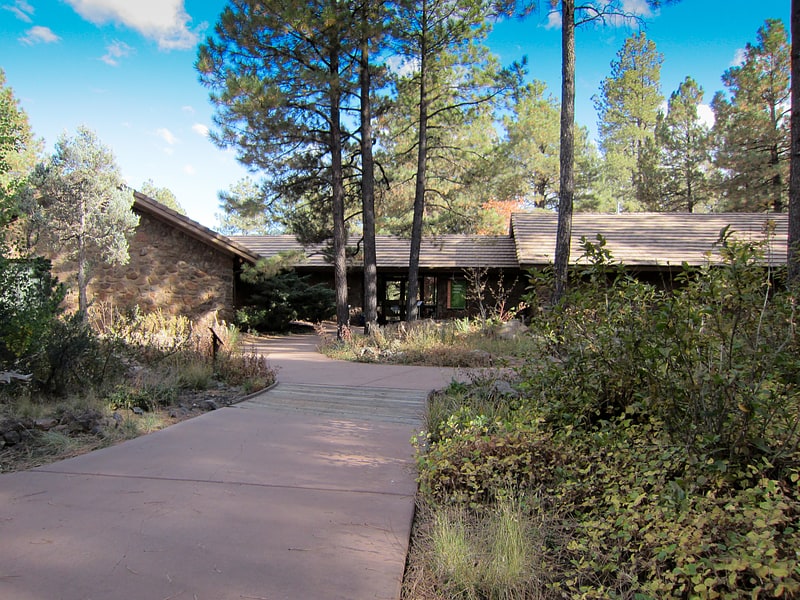
Arboretum in Coconino County, Arizona. The Arboretum at Flagstaff is a 200-acre arboretum that is home to 750 species of mostly drought-tolerant adapted and native plants representative of the high-desert Colorado Plateau, home to the Grand Canyon and Zion National Park. It is located 3.8 miles south of U.S. Route 66 on Woody Mountain Road, on the west side of Flagstaff, Arizona, US. The facility is located at 7,150' in elevation, making it one of the highest-elevation public gardens in the United States. The Arboretum has an extensive regional collection of the Penstemon genus and hosts an annual Penstemon Festival.
The Arboretum was originally forest and a working ranch, and the home of Frances McAllister in the late 1960s. She donated the land and created its financial endowment for the Arboretum in 1981. To support research the Arboretum is also home to the Merriam-Powell Research Station and Southwest Experimental Garden Array.[8]
Address: 4001 S Woody Mountain Rd, 86005-8775 Flagstaff
Meteor Crater Natural Landmark
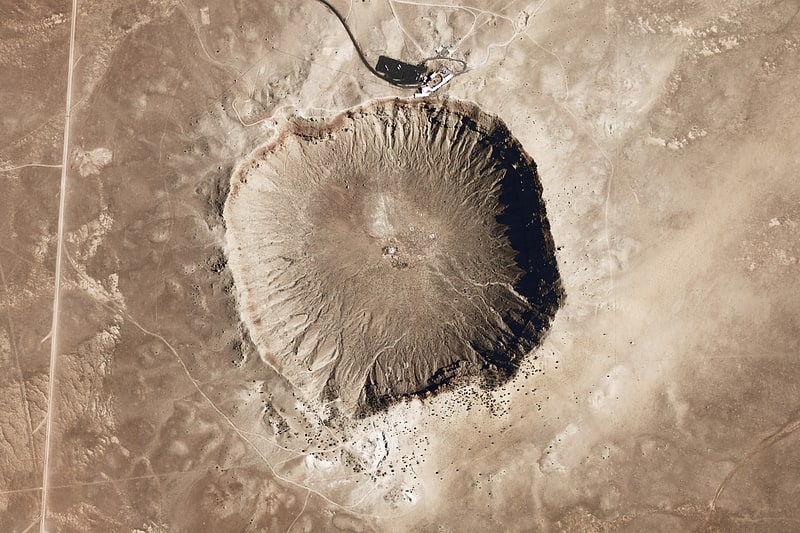
Impact crater in Arizona. Meteor Crater, or Barringer Crater, is a meteorite impact crater about 37 mi east of Flagstaff and 18 mi west of Winslow in the desert of northern Arizona, United States. The site had several earlier names, and fragments of the meteorite are officially called the Canyon Diablo Meteorite, after the adjacent Cañon Diablo. Because the United States Board on Geographic Names recognizes names of natural features derived from the nearest post office, the feature acquired the name of "Meteor Crater" from the nearby post office named Meteor.
Meteor Crater lies at an elevation of 5,640 ft (1,719 m) above sea level. It is about 3,900 ft (1,200 m) in diameter, some 560 ft (170 m) deep, and is surrounded by a rim that rises 148 ft (45 m) above the surrounding plains. The center of the crater is filled with 690–790 ft (210–240 m) of rubble lying above crater bedrock. One of the interesting features of the crater is its squared-off outline, believed to be caused by existing regional jointing (cracks) in the strata at the impact site.
Despite historic attempts to make the crater a public landmark, the crater remains privately owned by the Barringer family to the present day through their Barringer Crater Company, which proclaims it to be the "best-preserved meteorite crater on Earth". Since the crater is privately owned, it is not protected as a national monument, a status that would require federal ownership. It was designated a National Natural Landmark in November 1967.[9]
Northern Arizona University
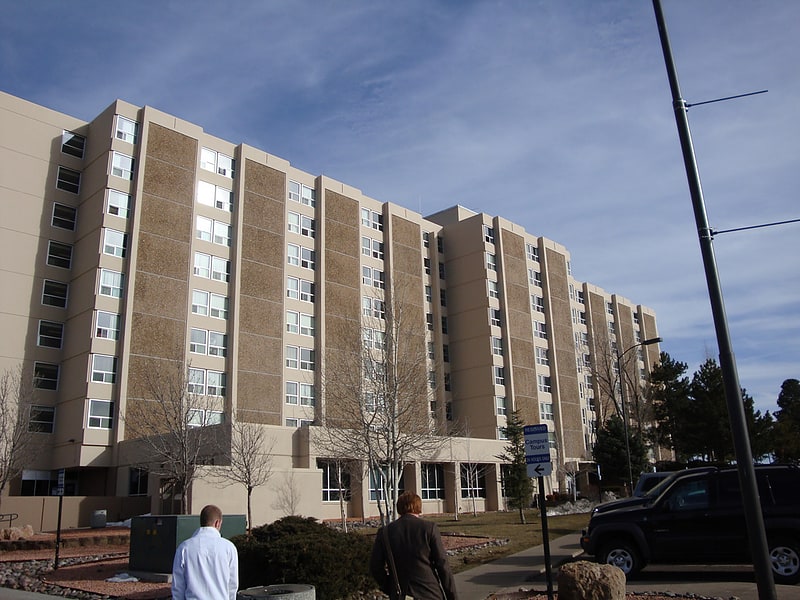
Public university in Flagstaff, Arizona. Northern Arizona University is a public research university based in Flagstaff, Arizona. It was founded in 1899 as the final public university established in the Arizona Territory, 13 years before Arizona was admitted as the 48th state. It is a Hispanic-Serving Institution.
A member of the Association of Public and Land-grant Universities, NAU is one of the three universities governed by the Arizona Board of Regents and accredited by the Higher Learning Commission. As of fall 2021, 28,718 students were enrolled at NAU with 21,248 at the Flagstaff campus. The university is divided into eight colleges offering about 130 undergraduate degrees, 100 graduate programs, and various academic certificates. Students can take classes and conduct research in Flagstaff, online, and at more than 20 statewide locations, including the Phoenix Biomedical Campus.
The university is classified among "R2: Doctoral Universities – High research activity" and ranked No. 191 in the National Science Foundation (NSF) national research rankings for fiscal year 2019. It is ranked No. 57 nationally among the most innovative schools in the 2021 U.S. News Best Colleges Ranking. NAU's astronomy faculty co-discovered several astronomical bodies, such as Eris, Sedna, and are major participants in the search for the hypothetical Planet Nine, with the university being a primary institution of the Lowell Observatory.
The NAU Lumberjacks compete in the NCAA Division I, primarily as part of the Big Sky Conference, and have won several national championships, notably in cross country running. At an elevation of 6,950 feet (2,120 m) above sea level, the school's athletic facilities are used by Olympic and professional athletes worldwide for prestige high altitude training.[10]
Address: S San Francisco St, 86011-0001 Flagstaff
Presbyterian Church Parsonage
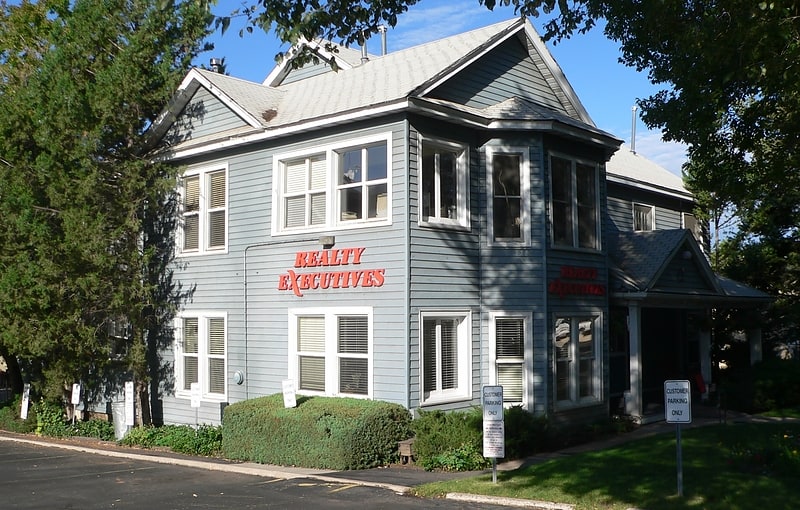
Church in Flagstaff, Arizona. Presbyterian Church Parsonage is a historic Presbyterian church parsonage at 15 E. Cherry in Flagstaff, Arizona.
It was built in a Queen Anne style and was added to the National Register in 1986.[11]